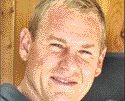Market-watchers are bracing themselves for a rough ride as Bre-X Minerals (BXM-T) and Freeport McMoRan Copper & Gold (FCX-N) await interim results of Strathcona Mineral Services’ technical audit on the Busang gold project in Kalimantan, Indonesia.
Strathcona, engaged by Bre-X in March, is expected to settle the differences between Bre-X, which contends its Busang property has a large gold resource, and Freeport, which found “insignificant” gold values after drilling seven holes on the property in February and March.
Strathcona informed Bre-X that it hoped to send its interim report by May 2.
Bre-X, in turn, promised to make the results public before the exchanges open on May 5. A final report will be ready around the middle of June.
Strathcona drilled six holes and has selected a representative 175 samples from the 1,470 metres of core for the first round of chemical analysis. The samples were flown to Perth, Australia, for preparation at one lab, and then distributed to labs in Canada and Indonesia for fire assay and cyanide-leach analysis. Only one or two persons at each lab will know the actual numbers, and the consulting firm has also instructed the labs not to send it the results of the analyses until all three labs have finished the assaying.
The interim report will deal with the first round of analyses, and the final one will cover the whole audit. Strathcona’s Graham Farquharson wrote in his letter to Bre-X, “We anticipate the principal conclusions . . . will remain unchanged in the final report.”
Anyone tempted to put side bets on the outcome may find that the Busang metallurgical report by Perth-based Normet holds a number of clues. The Northern Miner has now obtained a copy of the report that includes all Normet’s main text, plus a report by mineralogical consultant Roger Townend.
Townend found that crushed and unprocessed Busang samples contained the minerals rutile, leucoxene and magnetite — all of which are common in stream gravels but uncommon in hydrothermal gold deposits. Busang’s host rocks probably carry small quantities of rutile and magnetite, but Townend judged rutile and leucoxene to be more abundant than most of the base metal sulphides, except pyrite — an unusual thing in mineralized rock, unless some rutile had been added from somewhere else. On the other hand, Townend also found some rutile inclusions in pyrite, so at least some of the rutile may have come from the Busang core.
Another of Townend’s observations is difficult to explain unless coarse gold had been added to broken or crushed core. The maximum size of the sulphide mineral grains in the Busang material varied from 0.2 mm in a sample from the Central zone to 1 mm in a sample from the southern half of the Southeast zone; most sulphide grains were much smaller than that.
In almost all hard-rock gold deposits, the great bulk of the gold occurs in or on sulphide grains as coatings, inclusions or fracture fillings. Early reports by Bre-X geologists indicated Busang was no exception. Because gold grains occur this way, they are almost always much smaller than the accompanying sulphide grains. Yet Townend’s work showed the gold grains were mainly 0.1 to 0.4 mm, larger than most of Busang’s sulphide grains. Sieve analyses by Normet confirmed Townend’s observations: the fine fraction generally showed low gold grades, but gold assays in the coarser fractions ran as high as 17.8 grams.
Much of the controversy over the salting question has centred on when and where it could have been done. The issue of on-site crushing has gripped pundits, investors and Bre-X itself, which found it necessary to publicize a sample preparation procedure. But it is still clear that a gold-bearing gravity concentrate could have been placed in the sample bags wherever the cores were crushed and whatever the bags contained — crushed, broken or whole core.
Crushing is usually done much the same way at any lab. Broken or whole core is normally dumped from a sample bag into the crusher, rather than picked out of the sample bags by hand. A gravity concentrate placed in the bag, no matter how fine, would still fall into the crusher with the sample. And both reports show evidence of a coarse gold concentrate, possibly a placer, in the samples Normet and Townend received.
At presstime, Bre-X announced it had agreed to extend the “exploration period” in its agreement with Freeport. “We just requested an extension from Bre-X to June 30 in order to allow time for completion of the independent audit by Strathcona,” said Kristin Lemkau of Freeport.
The Northern Miner will carry any breaking news of the report on its World Wide Web site, which is http://www.northernminer.com


Be the first to comment on "Busang audit expected May 5"